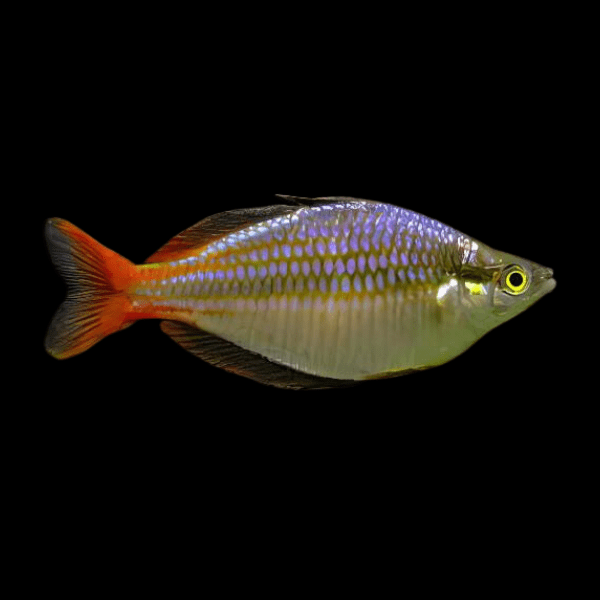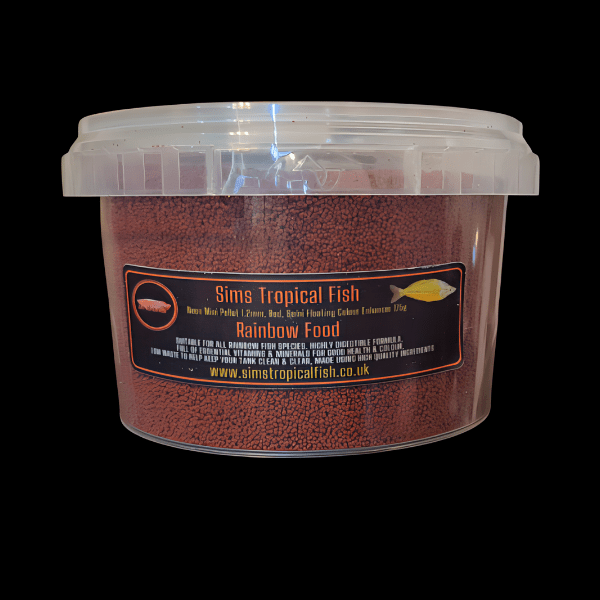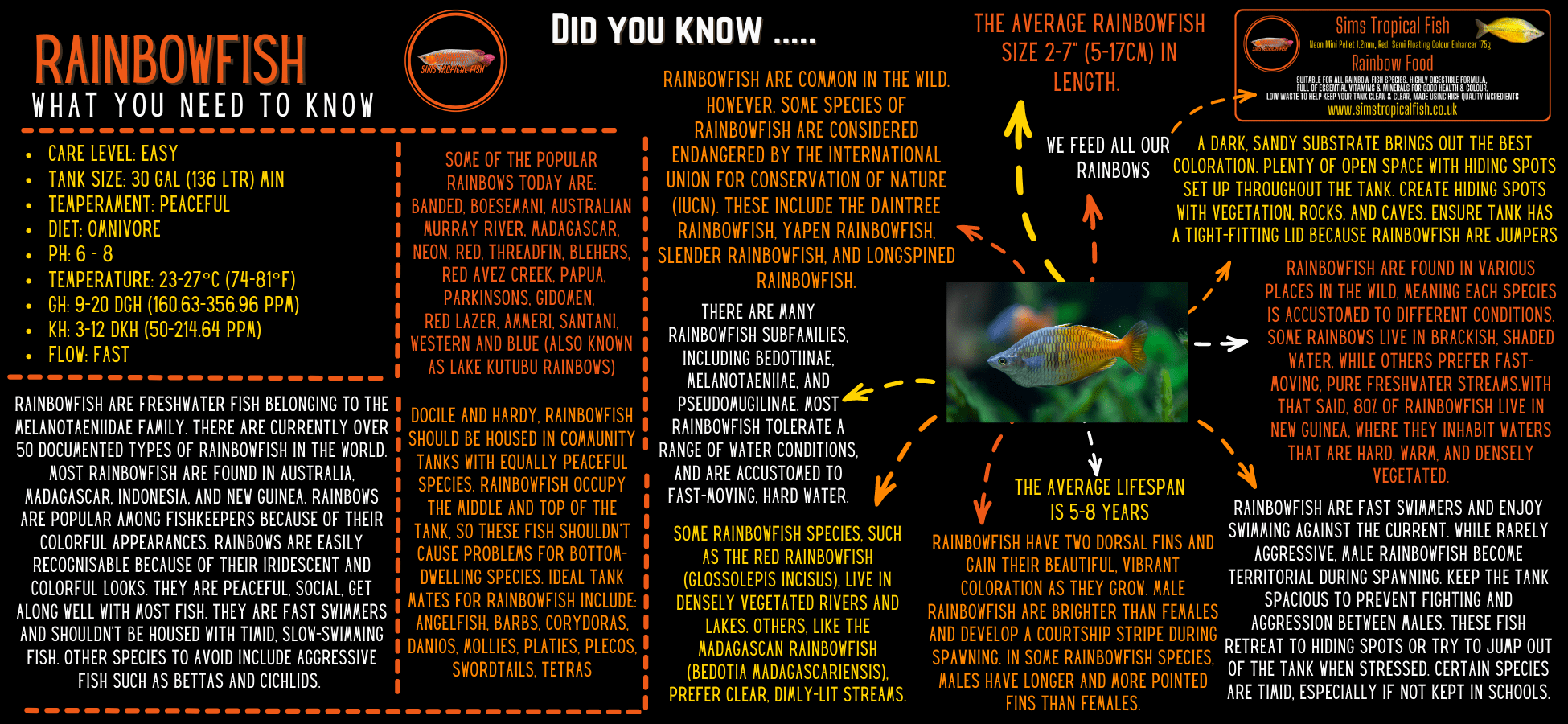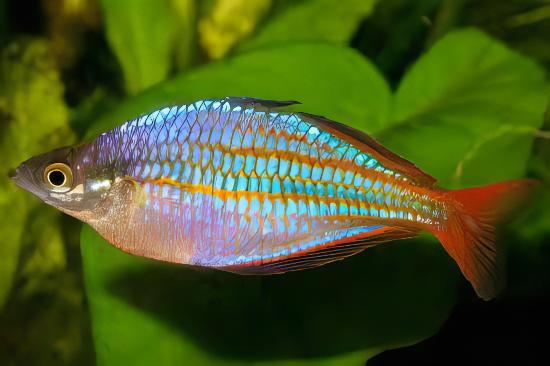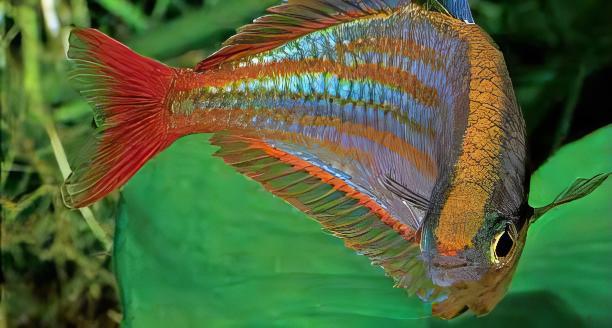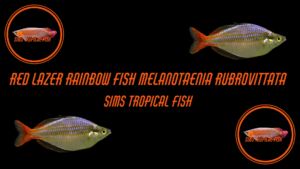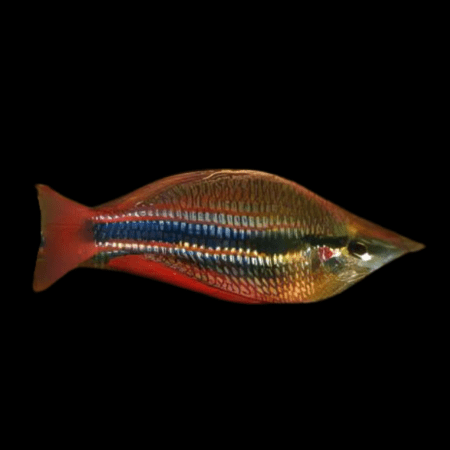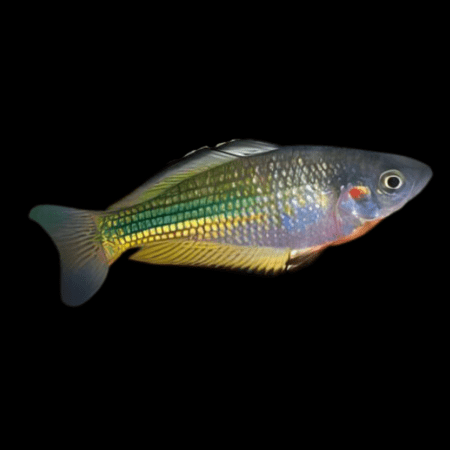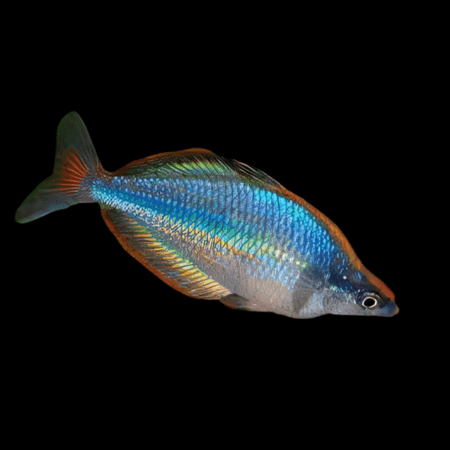Description
Red Lazer Rainbow Fish Melanotaenia Rubrovittata
Overview
Synonyms: Melanotaenia splendida rubrostriata, Nematocentris rubrostriatus
Distribution: Indonesia and Papua New Guinea.
Maximum Size: 13.5cm (5.3″)
Temperature: 24-28°C
Water Parameters: pH: 6.5-7.5, dH: up to 15 degrees.
Compatibility: Community
Lighting: No special requirements
Sexual Dimorphism: In mature fish, the males are often more colourful, deeper-bodied, and develop longer dorsal and anal fins.
Feeding: Flake, granules and frozen foods
Description
Care
The Red-striped Rainbowfish is known from lowland coastal creeks, rivers, and swamps, where they are typically found in the marginal areas amongst dense vegetation and submerged logs/branches. This is a medium-sized, peaceful species that is ideally suited to planted community aquaria. The tank should be as spacious as possible, as these are fairly active fish, and they should be maintained in groups of 6 or more due to their shoaling nature. The juveniles of many rainbowfish species can often look a little drab compared to the adults, and as such are sometimes overlooked in the shops. However, once settled into the security of the planted aquarium, these young specimens will begin to colour up, gradually revealing their stunning adult beauty. Red-striped Rainbowfish will not bother smaller tankmates, as their mouth/throat is too narrow to be able to swallow them.
Feeding
Flake, green flake, micropellets, and small frozen foods such as mosquito larvae, vitamin-enriched brineshrimp, and daphnia.
Breeding
A separate good-sized breeding aquarium should be set up with a substrate of marbles. A small air-driven sponge filter (with a mature sponge) should be added to give gentle circulation and filtration. A conditioned group (3 females, 2 males) should then be acclimatised across to the breeding aquarium, which should be furnished with plenty of fine-leaved plants/Java moss clumps. After a time, a male will swim in front of a female, displaying to her. He will then begin to drive the female over the plants, utilising the whole length of the tank. The relatively large eggs will be scattered over the plants a few at a time, usually totalling around 20-60 per day. These fish are known as ‘continual spawners’ which means that the spawning activity takes place over several days/weeks. This can present problems to the aquarist in that some adult fish may begin to consume the eggs as they are scattered, although this may not be a problem if the adults are kept well fed. However, many fishkeepers have found the eggs to be remarkably tough and have had great success in siphoning them out into another aquarium (containing matching water from the spawning tank) or else using spawning mops, which, when having caught a number of the eggs, can be moved to a separate tank (again with matching water) and replaced with a new mop, as and when each series of eggs are deposited. The eggs will usually hatch in 6-9 days (dependent on temperature) and once free-swimming, the tiny fry can be offered infusoria, moving onto larger foodstuffs as they develop.
